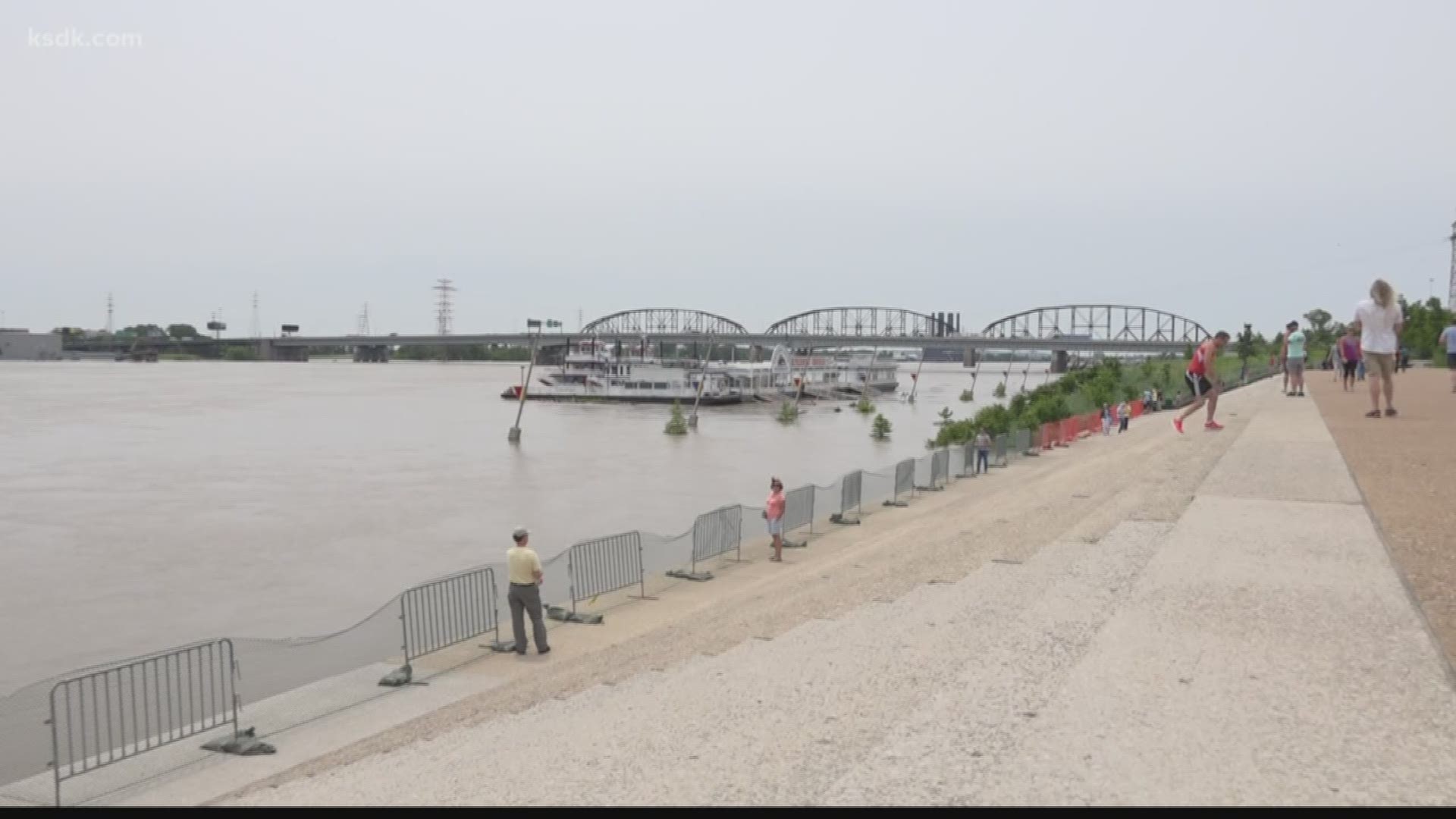ST. LOUIS — The Mississippi River continues to rise and could be just a few feet short of the historic flood levels of 1993 by Thursday.
Floodwaters have already cut off hot water to businesses, hotels, and Busch Stadium in downtown St. Louis. Hundreds of people stopped by the Arch grounds to get a look at just how high the water is on Monday.
The Mississippi River has covered up street signs and roads on the riverfront but has not yet made its way up the arch stairs.
"I feel like it seems like it is as high as it was [in 1993], but it hasn't hit that mark yet,” said Tara Glynn of Collinsville. “Hopefully it doesn't get too much higher, but I kind of feel like it's going to.”
Glynn is not wrong. The river is expected to rise two more feet in the next three days.
"When we were walking through about a street over, it looks like they were just pumping water and I guess it's the basement," said Glynn.
All the water is causing problems for local businesses like the Lumberjack Saloon on the landing.
"Obviously this is how the flood has affected us,” Rich Barnes said, as the water was being pumped out of the business. “It's gotten into the basement and the sub-basement, which is an area we use for events.”
Barnes had to shut down during one of St. Louis' busiest weekends.
"Saturdays are our busiest day anyway and then when you put [the Blues and Cardinals] events in town, that's a huge loss for us," explained Barnes.
The Mississippi River has been above the flood stage for the last 79 days. The Army Corps of Engineers said it's likely to break the record for longest flood in history by the time the water goes down.
"Yeah it's getting pretty bad," added Barnes.
"Well there's a speed limit sign and all you can see is the speed, barely. It's crazy to think that you could actually drive down here six months ago, and now you can't get halfway there," said Glynn.
The Army Corps of Engineers said the biggest issue they're facing is not being able to inspect the levees to make sure they're structurally stable.
Latest flood-related stories:
- Homes flooded after Mississippi River breaches Pin Oak levee in Winfield
- Bellefontaine Neighbors braces for approaching flood waters
- More heavy rain expected this week as area deals with near-record flooding
- 3 kids arrested for removing sandbags as Metro East floodgates go up
- 'Please stay away': Lincoln County officials want 'flood tourism' to stop as residents evacuate

